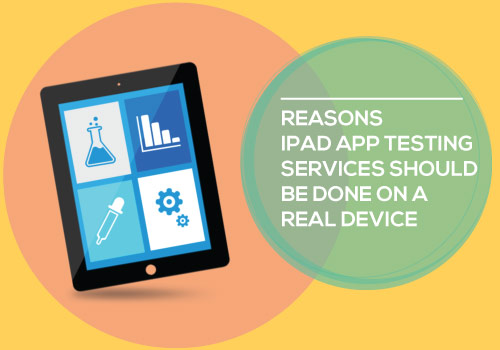With the rise in use of iPads, iPad app testing services has also become crucial for companies and brands. When developing iPad applications, it’s important to perform extensive usability testing across as many different situations or conditions as possible.
Though mobile app development would include both emulators and real devices, there are certain reasons why testing on real devices usually result in better testing outcomes than using emulators.
Common Practices
Best practices would indicate that actual development should use emulators (and a few reference real handsets), while sanity and regression testing should be done on real handsets. While simulators are an inexpensive option for testing the app and it can be downloaded for free, they are suitable only at the starting stages of iPad application development. It is ideal to choose real devices for the later usability and performance testing phases.
It may be expensive to test apps on real devices as you have to buy them. However, using a mouse and keyboard on the simulator is totally different from using a finger on the mobile devices.
You May Also Like : Mobile Software Testing Guide for First Time App Developers
When Should You Introduce Real Devices
It has to be decided by individual organizations as to when real devices should be introduced, what the ideal number of devices are for covering market needs, and how those devices can be best managed.
-
Reliable results – It is highly recommended to use real devices for testing apps because it gives the real environment in which the app is working and also makes sure that the app delivered would be of high quality. Real handsets can always give you error-free results (no false positives or false negatives).
-
Better user experience – Investing in the latest versions of devices, though expensive, can deliver a better user experience. By taking into account the CPU, memory, screen size, etc, the tester can understand what actually the user will be going through.
-
Performance testing – By using emulators, you will not be able to test situations such as receiving a text message or phone call while using the app. With real iOS devices, you can test sign-up, login, handle data, connection speed and error messages, thus realizing performance lags.
-
Display/resolution variance – Display or appearance of the app may be different on an emulator as opposed to a real device. It is crucial to check app’s brightness, changes in resolution as well as dark and light situations. It’s also very hard to simulate light and dark situations on an emulator.
-
Device configurations – By using emulators, the whole process is dependent on the hardware. With actual devices, things can be tested directly. For the same reason, at least one real device should be used during all phases of development to assess the processing speed of the app. The emulators are not updated to reflect new devices available in the market.
-
Network – When it comes to network configuration, simulators usually run on the PC, connect to LAN and access the internet via corporate firewall. Here, simulators cannot be used to slow network where devices experience network issues.
Read Also : Top Automation Tools for iOS App Testing Services
The major option for testing real occurring events like incoming calls, SMS and battery consumption and the charger’s overall performance can be only done on an actual device.
Reliable companies that offer iPad app testing services maintain quality assurance by following a healthy mixture of real device and simulator testing. Before releasing your application in App/Play Store, or to devices, it’s worth testing on the device at least once.
https://www.planittesting.com/nz/insights/2015/why-use-real-devices-for-mobile-application-testin
https://testingmobileapps.wordpress.com/2016/02/22/emulator-simulator-real-device-testing
https://www.linkedin.com/pulse/basics-mobile-web-testing-real-devices-using-selenium-goldshteyn
http://blog.congruentsoft.com/how-to-test-mobile-applications-emulators-or-real-devices
http://www.hiddenbrains.com/articles/advantages-of-using-actual-devices-for-mobile-app-testing.html


